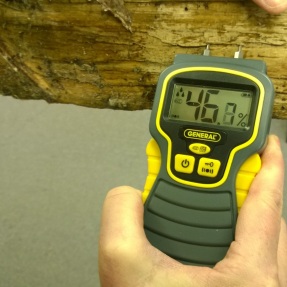
Many of us turn to wood heat to stave off winter’s chill. But before you fire up that wood stove or fire place, make sure your wood is ready to burn. Burning wet or unseasoned wood can give you more smoke than heat, polluting the air for you and your neighbors. Burning wet wood can even damage your wood burning appliance or chimney by causing creosote build-up.
Wood smoke may smell good, but it’s not good for you. Burning wood floods the air with fine particles that can be inhaled deep into the lungs. Study after study link fine particle pollution to serious health problems including heart and lung disease. Burning wood improperly also releases hazardous chemicals such as dioxins, formaldehyde, and arsenic. Inefficient burning – either because of poor air flow or burning wet wood – creates more pollution.

Dry, seasoned wood is the key to a hot fire. Never burn freshly cut firewood, which can contain up to 50 percent moisture. Seasoning the wood means allowing the moisture to escape over time – at least 6 months before burning. Seasoned wood burns hotter, cuts fuel consumption and produces less smoke.
But properly seasoned wood takes more than just time. Splitting the wood before stacking is crucial to allowing internal moisture to escape. Once split, wood should be stacked and covered to keep out rain and snow.
Firewood is ready to burn if it contains less than 20 percent moisture. A handy little gadget called a moisture meter will tell you whether you’ve reached this magic number. Moisture meters are available at your local hardware store and cost between $20 and $40.
To use a moisture meter, first split a piece of firewood so that the inside is exposed. Place the prongs of your moisture meter against the freshly-exposed wood. The meter should read less than 20 percent.
A smoldering fire produces excessive smoke, so be sure to maintain a hot fire, even overnight. Keep the damper open and the front doors shut for maximum efficiency.
Never burn treated or painted wood or trash in your wood burning appliance. These items emit toxic pollutants when they are burned.
For more information, visit EPA’s Burnwise page at http://www.epa.gov/burnwise/ .
